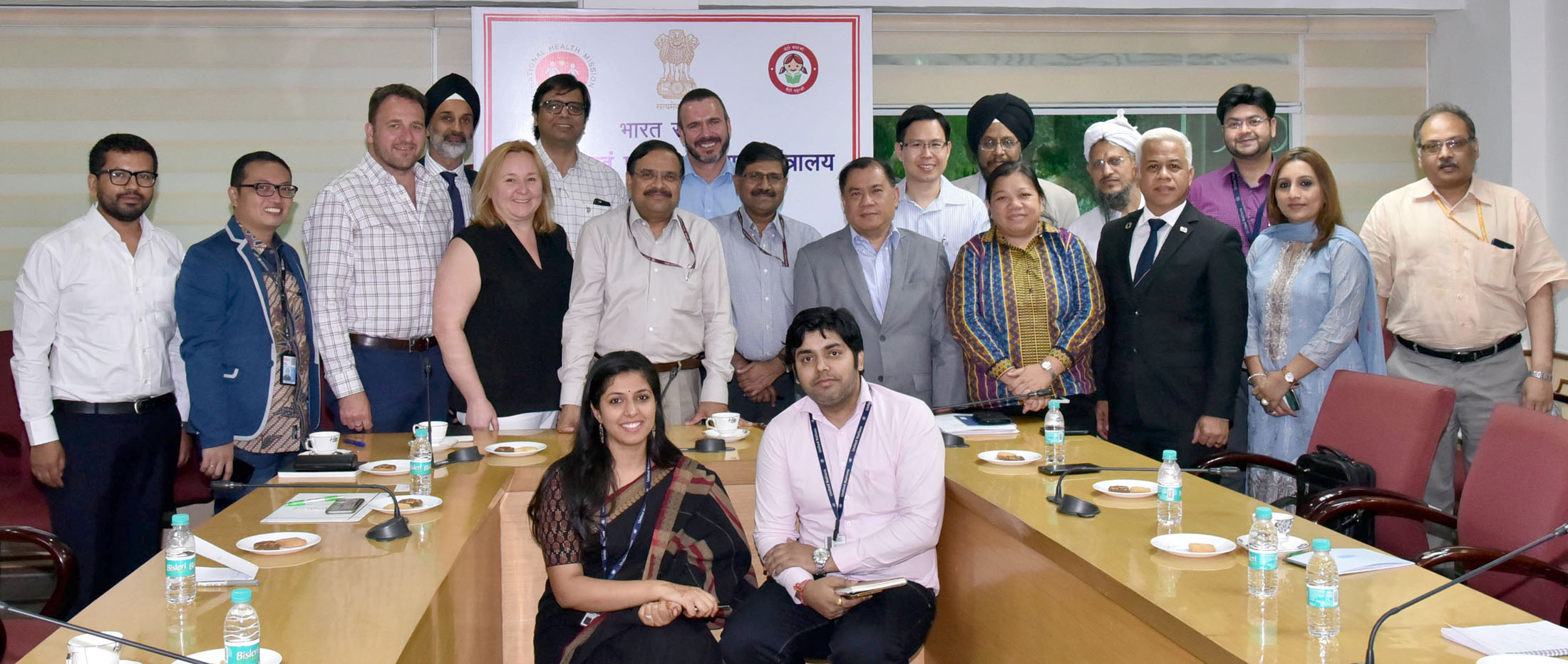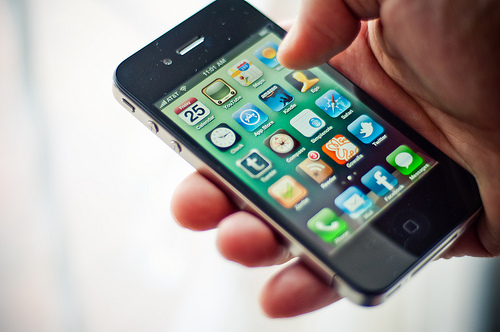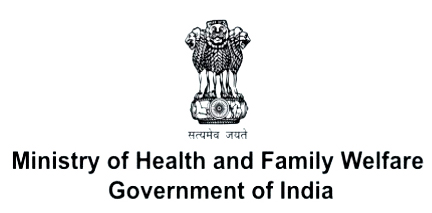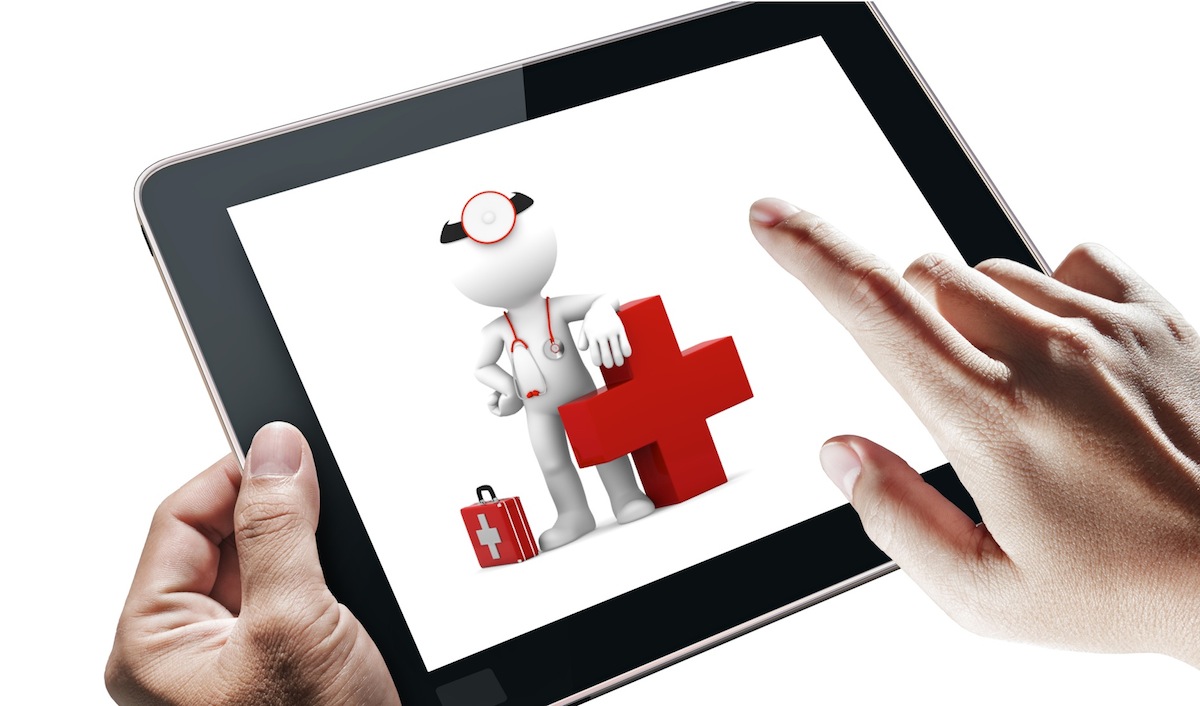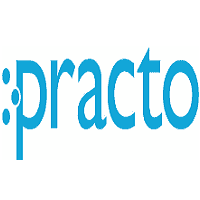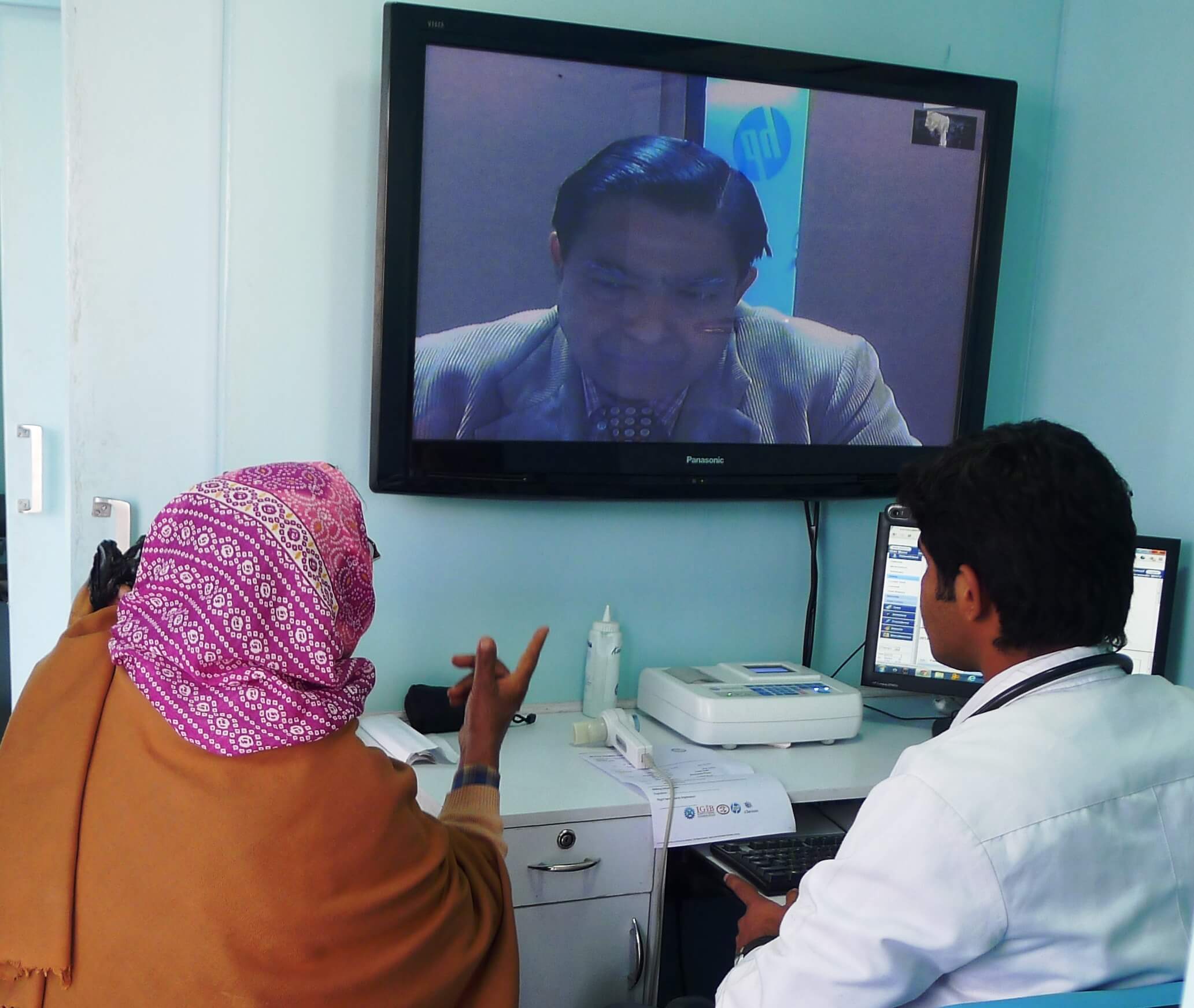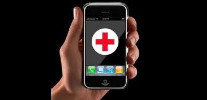
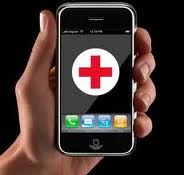
Every decade is being buzzed with a new magical word swear to revolutionize the healthcare delivery. It promises to bridge the gaps between rural demands and supply of healthcare services over-night. How much success have we seen with newly emerging technologies in Healthcare in last 25 years? With the introduction of ICT in healthcare almost 30 years back, we have not reached consensus among concerned stake holders even on standardized protocols for data sharing. mHealth itself has not been able to attain a state of uniformity in addressing & communicating ourselves as mHealth community.

Are we really mHealth ready yet? How are we going to use it for healthcare delivery? Who is the tar-get audience and who is going to consume these services? Do we have plans available to educate the community and make them aware of the benefits of mHealth? There are hundreds of questions lying underneath which need to be answered before we claim to make a difference using mHealth. This paper briefly reviews the arrival & advantage of ICT in healthcare followed by mobile revolution and introduction of mHealth and its potential contribution in Healthcare delivery and our readiness to embrace it.
What is mHealth?
The term is still perplexing to many of us; mHealth in characterization is not limited to healthcare information exchange on mobile phones. All the AV devices, be it your Laptop, TV, Tablet, or PDA, should be able to deliver healthcare service. Though considering the fact that 70 percent of our population is in rural India, the definition of mHealth here would be completely different. For rural India, the mHealth would translate to access to healthcare services through mobile phone. 104 Services being run by Health Management & Research Institute has proved this, where more than 85% of the calls for healthcare needs are from rural areas.
ICT in Healthcare
ICT by definition encapsulate Information technology (IT) as well as telecommunication, broadcast media, all types of audio and video processing and transmission and network based control and monitoring functions.
Almost 30 years after the introduction of ICT to healthcare, we are still struggling with answers on RoI, usability and its promise to enhance quality and efficiency of service delivery. ICT provided us with a vehicle to bridge the digital divide and to transform healthcare delivery to the last mile. It gave us an opportunity to clean the clutter of papers, files, lost patient records, duplicate tests and availability of right information to the decision makers at the right time.

Did we really exploit the ICT to its fullest or we failed to drive it to our benefits?
ICT made us felt its presence in telemedicine, electronic health records, hospital administration & billing, creating paperless hospital settings, e-procurement, healthcare score cards, audits, clinical information systems etc. In India, ICT in healthcare has seen varying success across states in government initiatives, due to different levels of engagements among various departments of state & central government. Two of the many examples of ICT enabling healthcare in government and Public private partner can throw light on its viability in healthcare.
In Uttar Pradesh which has its own share of developmental issues a health programme called Aarogyam was launched in Baghpat and J.P Nagar districts, an end-to-end community-based digital health mapping project. Another example is that of a PPP model between GVK & Gov. of AP, GVK EMRI, which handles medical emergencies through the 108 Emergency service. This is a free ser-vice delivered through state of art emergency call response centers. It has ambulances across 12 states.
NRHM Assam, in collaboration with Healthfore Technologies has taken an initiative to further lever-age ICT for Tele radiology service delivery connecting 11 district hospitals with a central command reporting center. These 11 districts will have the imaging center and imaging equipment will be con-nected to state of the art PACS (Picture Archival & Communication System). The X-rays and CT scans will be exposed in various districts hospitals of Assam, images transmitted, stored in PACS and re-ported by Radiologists sitting thousands of kilometers away. This is a pioneering initiative by NRHM Assam and state government.
eHealth in India
India started to make strides in the fields of telemedicine and eHealth. IT has been a late entrant in this field and most of the early adopter hospitals started with small systems that were developed in-house. However, these systems neither gave the desired results nor could be integrated with newer systems available from other vendors. The major demand for updated solution started with the es-tablishment of the large corporate hospitals like the Fortis & Apollo groups. Fortis hospital has taken it a step further by setting up Critinext, the first remote eICU in India. This enabled remote hospitals to provide advanced consultation, care and supervision to their critically ill patients instead of trans-ferring them to super specialty hospitals.
While in telemedicine, most of the initiatives are still in pilot project mode, supported by the Indian Space Research Organization, Department of Information Technology and being implemented through (NRHM & Ministry of H&FW) state governments. A few corporate hospitals have developed their own telemedicine networks, prominent among them being the Apollo Telemedicine Network-ing Foundation, Sri Ramachandra Hospital and Sankar, Nethralaya. In last 30 years no state govern-ment could create a telemedicine network reaching out to rural and tribal areas and we continue to debate how mHealth will change the face of healthcare delivery in India. It is quite evident from the gap between what the technology can deliver and what we delivered that still there is a long way to go.
Why mHealth?
mHealth seems to be the most promising technology driven framework already touching the healthcare pyramid from top to bottom. mHealth qualifies to be an ideal candidate for three (3) simple reasons, mobile penetration, its cost & ease of use. With the launch of Health information helpline, mHealth has already redefined healthcare delivery to the last mile. The Indian tele-com sector has seen an exponential growth in the last few years. According to the international Telecommunication Union (ITU), there were almost 6 billion connections in use by 2011.1. Favor-able regulatory policies and decreasing tariffs have led to a tre-mendous increase in the subscriber base. The number of tele-phone subscribers in India reached 874.68 million at the end of May 2011, out of which 840.28 million are wireless subscribers. Only 3% of Indias population owns a computer and with such a poor PC penetration mobile phone became an alternate medium for delivering a variety of healthcare services and content through mobile.
Global Perspective: A global mHealth research study of 10 coun-tries by PWC reveals that mobile is going to have significant im-pact on healthcare delivery. Indian mHealth industry has shown a higher adoption and acceptance of in comparison to their global counterparts.
Indian Perspective: Health Management Research Institute (HMRI) & Emergency Management Research Institute (EMRI), two pioneer organizations have not only paved the way but clearly established that mHealth can re-write the healthcare de-livery framework in India. EMRI having its presence in 12 states and 2 union territories with 3931 ambulances is the largest pro-fessional emergency provide in India today3. Mobile technology played the most important role in connecting patients in need of emergency services to EMRI and thus transporting them to most appropriate level of care. HMRI by utilizing Health Information Help Line (HIHL) in Assam and many other states is bridging the gap between demand and supply of primary healthcare needs of the patients till last mile. Whereas Maharashtra, it is comple-menting to the healthcare workers in field by providing them medical advice and information on national and state health program and events.
The progress in mHealth in India is rather limited. Most mHealth projects in India started their jour-ney in early 2000. Despite the promises of data collection using mobile devices, the experiments are yet to conclusively establish the acceptance and feasibility of this method for large scale deploy-ment. In particular, a sizeable number of ASHAs in northern India have shown their limited ac-ceptance of data collection using SMS and mobile forms. This process needs further research and development. Few projects in India have contributed to the development of a fuller understanding of behavior change processes facilitated by mobile communication.
Challenges in the adoption of mHealth are multiple. There are technological challenges in input, dis-play, transfer and processing of data in English and Indian languages (especially for people with dif-ferent levels of literacy), security and integration with medical devices. Traditional health research institutions lack capacity to develop mHealth interventions that require multidisciplinary approaches of behavioral, medical, business and computer sciences. The public health departments in central and state governments also lack capacity to design and implement mHealth on the ground level.
Technological research and development are required in multiple areas, especially in medical devic-es, network, security, data, language, among other areas. Both open and commercial innovations can add value to the advancement of mHealth.
Conclusion
Be it a government, patient or care provider, we are intrinsically afraid of new technologies and fur-ther frightened if it is related to healthcare. Our adoption of new technologies in past was directly proportionate to its Return of Investment (RoI). Majority of these adoptions were in the areas of ad-vanced treatment by corporate hospitals. We chased the western healthcare in search of most ad-vanced treatment that could bring more footfalls and increased our revenue but we failed to follow them in adopting new technologies and regulatory compliance. We kept looking at government stakeholders to take the initiative and invest millions in implementing Healthcare IT. This does not seem to be the immediate priority or the need for the healthcare system. The priority for the gov-ernment is to fulfill the gap between demand and availability of primary and secondary healthcare infrastructure including human resources.
In absence of adoption of mHealth as an immediate priority by government health authorities, it is clearly evident that the corporate and private players need to take the lead in adoption and dissemi-nation of mHealth among patient and provider community. There is a clear need for a credible study by device makers and provider community to establish the evidence based adoption of mHealth in Chronic disease management, remote patient monitoring, real time availability of patients vital parameters in case of critical patients in post op care, ICU & trauma units.
We followed in past, We did not lead………………….Let us change it now.
About Author
Dr. Nitin Verma (VP- mHealth, HealthFore Technologies Limited) leads the Tele Triage Practice. He has 20 years of experience in Healthcare IT. A qualified M.B.B.S, MS professional with experience in healthcare product development, consulting, regulatory compliance, pre-sales, business develop-ment and pharmacy benefit & claims management. He spearheaded several healthcare initiatives in various states of India including prestigious sickle cell screening program with Govt. of Gujarat. He is one of the key architects involved in design, development and deployment of many low cost healthcare solutions for the Health Management & Research Institute (HMRI) enabling healthcare delivery to 42 million underserved rural populations in Andhra Pradesh (India)
Be a part of Elets Collaborative Initiatives. Join Us for Upcoming Events and explore business opportunities. Like us on Facebook , connect with us on LinkedIn and follow us on Twitter , Instagram.


